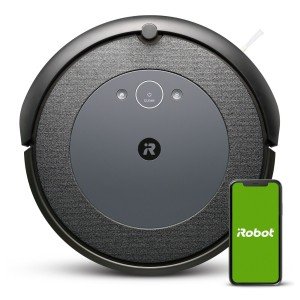The Rise of Robot Cleaners in Commercial Spaces
Intro
In current years, advancements in technology have actually triggered automation in various sectors, including everything from manufacturing to client service. One significant advancement in this arena is the development of robot cleaners in commercial spaces. These automated cleaning machines have changed the way companies approach cleanliness and maintenance, providing an option that is not just efficient however also cost-efficient. As companies seek to boost their functional performance while maintaining high standards of health, robot cleaners have actually ended up being an important part of modern-day commercial environments.
Understanding Robot Cleaners
Robot cleaners are autonomous gadgets equipped with sensing units, cams, and synthetic intelligence that enable them to navigate and clean numerous surfaces without human intervention. They can be found in different types and functionalities, accommodating diverse commercial requirements. Here's an introduction of the main types of robot cleaners:
- Autonomous Vacuum Cleaners: These devices are designed for efficiently vacuuming floorings, particularly in environments such as offices, retail spaces, and warehouses.
- Scrubbing Robots: These robots are customized for tough surface areas, utilizing scrubbing and cleaning options to tackle hard spots and gunk.
- Disinfection Robots: Equipped with UV-C light or chemical sprayers, these robots focus on disinfecting locations, significantly lowering the existence of harmful bacteria and infections.
Table 1: Types of Robot Cleaners and Their Features
| Type of Robot Cleaner | Primary Function | Suitable Environment | Key Features |
|---|---|---|---|
| Autonomous Vacuum Cleaner | Floor vacuuming | Workplaces, Retail Spaces | Sensors for browsing barriers, scheduling |
| Scrubbing Robot | Tough surface cleaning | Warehouses, Hospitals | Dual-brush system, adjustable settings |
| Disinfection Robot | Surface disinfection | Health care settings | UV-C or electrostatic spraying innovation |
Benefits of Using Robot Cleaners in Commercial Spaces
The combination of robot cleaners in commercial environments uses a myriad of advantages:
Increased Efficiency
Robot cleaners run autonomously, allowing them to clean locations at any time of the day or night without the requirement for human supervision. This efficiency is especially helpful for large facilities that experience high foot traffic, as these robots can cover more ground in less time.
Consistent Cleaning Quality
Robot cleaners are developed to carry out regularly, operating on pre-programmed settings customized to the specific needs of the environment. This guarantees a trustworthy standard of tidiness throughout the facility.
Cost-Effectiveness
While the preliminary financial investment in robot cleaners might be substantial, the long-term savings can be substantial. Robot cleaners reduce the need for a large cleaning staff, reduce human errors, and can decrease expenses connected with cleaning supplies.
Improved Safety
In settings like medical facilities and laboratories, preserving health is essential. Robot cleaners minimize human contact with possibly hazardous materials or areas, therefore improving general security.
Eco-Friendliness
Numerous contemporary robot cleaners are designed with sustainability in mind. They efficiently use water and cleaning products, frequently equipped with settings that minimize waste. This contributes to a greener technique to cleaning in commercial areas.
Key Considerations Before Implementation
While the benefits are significant, companies need to consider numerous elements before purchasing robot cleaners:
- Space Design: The layout of the facility can affect a robot's effectiveness. Locations with numerous barriers might require more innovative models equipped with sophisticated navigation systems.
- Maintenance: Although robot cleaners are normally low-maintenance, they do need periodic checks to ensure optimal efficiency. Having a dedicated service technician or service contract may be necessary.
- Software application Updates: The innovation behind robot cleaners evolves rapidly. Keeping best auto vacuum up to date is necessary for keeping functionality and security.
- Combination with Current Systems: Understanding how robot cleaners can be integrated into existing cleaning protocols is crucial to optimizing their prospective benefits.
Case Studies: Successful Implementation of Robot Cleaners
Case Study 1: A Large Retail Chain
A large retail chain carried out autonomous vacuum cleaners throughout its numerous stores. The robots allowed cleaning to occur throughout hours of operation, which significantly decreased labor expenses and enhanced general shop cleanliness. The chain reported a 25% boost in client complete satisfaction, directly attributing it to the improved shopping environment.
Case Study 2: A Local Hospital
A healthcare facility deployed disinfection robots to take on extensive cleaning regimens, particularly in waiting locations and operating rooms. These robots efficiently reduced infection risks while permitting cleaning personnel to concentrate on other pushing tasks. The medical facility kept in mind a significant decline in post-surgical infection rates, validating the effectiveness of robotic disinfection.
FAQs About Robot Cleaners in Commercial Spaces
Q1: Are robot cleaners suitable for all commercial environments?
- A: While robot cleaners are versatile, their viability might differ based on area style and cleaning requirements. It is vital to evaluate the specific requirements and layout of your commercial space.
Q2: How much do robot cleaners cost?
- A: The price of robot cleaners can range commonly based on their features and capabilities. Standard designs may begin at ₤ 1,000, while advanced designs can cost upwards of ₤ 10,000.
Q3: How typically do robot cleaners need maintenance?
- A: Robot cleaners normally require very little upkeep. Routine checks and software updates are suggested, while parts like filters might require replacing based on usage.
Q4: Can robot cleaners work alongside human personnel?
- A: Yes, robot cleaners are created to match human staff instead of change them. They can take control of routine cleaning tasks, enabling staff to concentrate on more complex tasks.
The commercial cleaning landscape is seeing a significant improvement through making use of robot cleaners. These gadgets complement human effort, boost tidiness, and add to cost savings, making them a worthwhile financial investment for business seeking to enhance their operational effectiveness. As innovation continues to develop, the abilities of robot cleaners are most likely to expand, further strengthening their function in keeping cleanliness in commercial areas. With mindful factor to consider of individual needs and an innovative technique, businesses can embrace this innovation to create a cleaner, more secure, and more efficient workplace.

